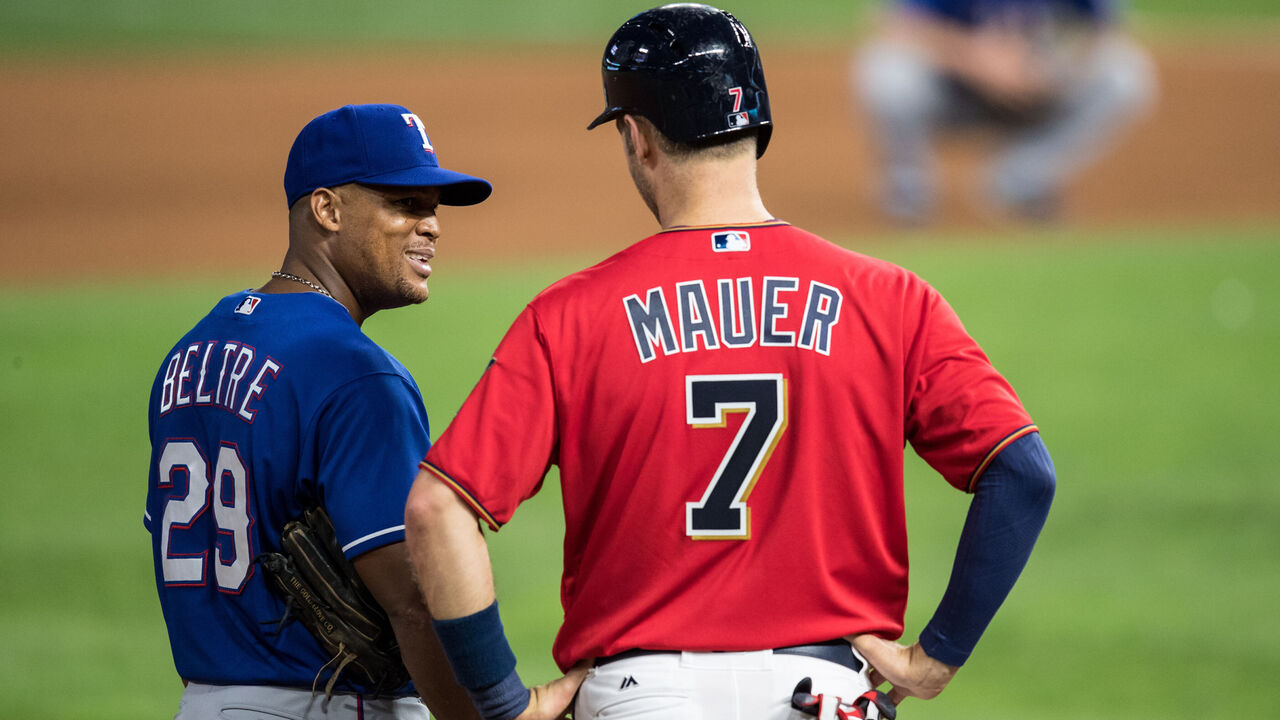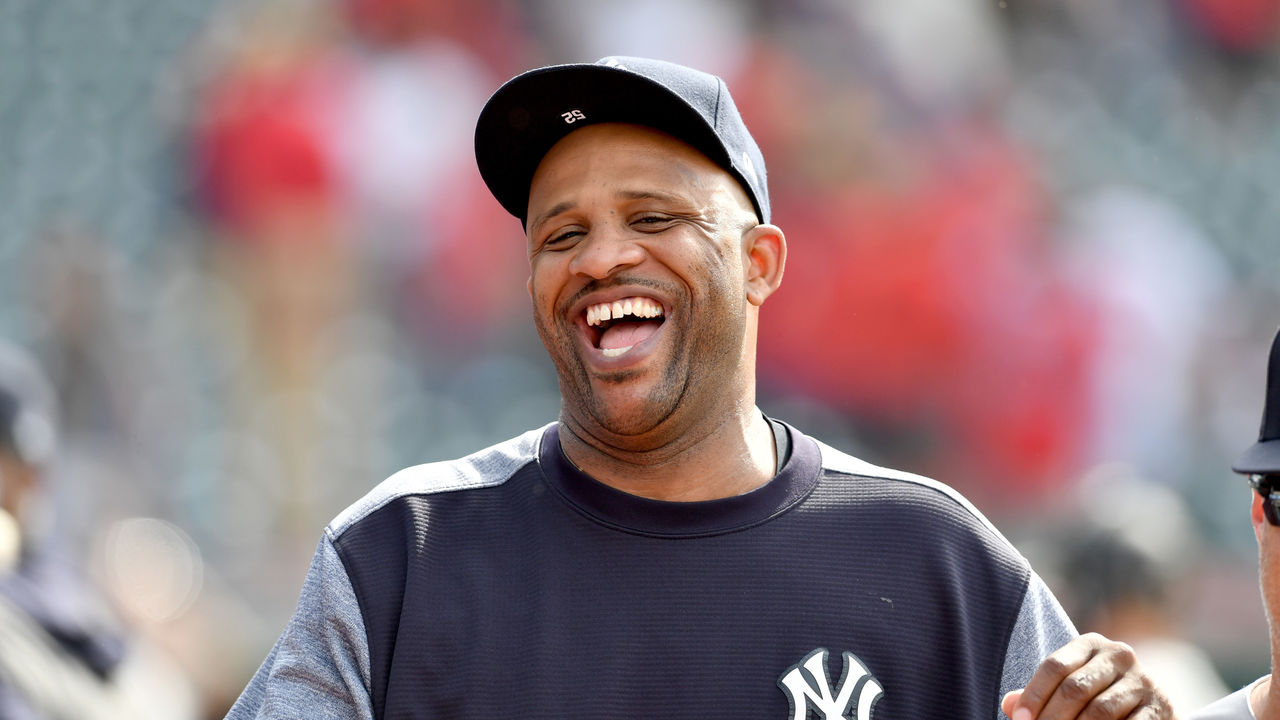One writer's Hall of Fame ballot, explained
It's that time of year again.
Each voter's given a seemingly straightforward task when the National Baseball Hall of Fame ballot arrives each November: evaluate the list of candidates and select which players deserve to be enshrined.
How voters determine who's worthy is anything but simple or uniform. The process is different from voter to voter.
What I strive to do as a voter is be objective. I've set up a process that I continue to follow into my third year as a voter. That doesn't mean I get it 100% right, but what I believe gatekeepers ought to strive for is fairness and consistency.
How to determine if a candidate belongs in this exclusive group?
I begin again by respecting precedent to determine who ought to be in the Hall.
For each position, if a candidate isn't less than one standard deviation from the median in a number of performance measures at his respective primary position, I reason he likely belongs.
As for those performance measures, it's a challenge to compare across eras, but stats like OPS+, ERA+, WAR, and WAR7 (a player's top seven seasons) help adjust for different eras and ballpark factors.
I also equally weigh both a player's peak and overall career production. Hall precedent generally asserts that a player must have enjoyed a long career but also sustained an elite peak.
There's nuance beyond that - awards, role in team success, and PED usage consideration - but that's the basis of how I arrive at decisions.

Hall of Fame voters are typically categorized as belonging to one of two camps: small or large Hall voters.
In my third year as a voter, I suppose I'm considered a large Hall-er. After all, one can only vote for up to 10 players and I've voted for 10 on each prior occasion. But I'm simply attempting to be a right-sized Hall voter with my process.
Of 17,610 major-league players to debut between 1871 and 1999, only 1.56% - 274 players - have reached Cooperstown.
Consider that every player to step on a major-league field could be seated in Fenway Park and there'd still be more than 10,000 empty seats. Then consider that everyone inducted into the Hall could fit into a dozen rows of one section.
The idea the Hall's been watered down simply isn't true. In fact, it's become too exclusive for modern players.
Players who debuted in the 1890s, 1920s, and 1950s were inducted at rates well over 2%. But acceptance rates are well below 2% for those to debut in the 1970s and 1980s, and below 1% for players from the 1990s. The logjam isn't going away any time soon as players from the 21st century begin to appear on ballots.
All that said, let's get into my ballot.
The holdovers
This year's vote was made a little easier as three players received the necessary 75% share of votes to join the Hall’s 2025 class: Adrian Beltré, Todd Helton, and Joe Mauer. Their selections relieved a bit of the ballot crowding.
Another player I voted for, Gary Sheffield, didn't reach 75% in his 10th and final year of ballot eligibility. His case is now left to future committees.
That means there are four open slots on my ballot. The six returning to my ballot are:
- Bobby Abreu (appeared on 14.8% of 2024 ballots, in his sixth year of eligibility)
- Andruw Jones (61.6%, eighth year)
- Manny Ramirez (32.5%, ninth year)
- Alex Rodriguez (34.8%, fourth year)
- Chase Utley (28.8%, second year)
- Billy Wagner (73.8%, 10th and final year)
Abreu's perhaps my most controversial selection, and my defense of his candidacy can be read here.

Yes, I selected some players whose legacies are tarnished by PED use. While there's a debate over whether players who tested positive for steroids belong in the Hall, there's a rule governing their eligibility: if they failed three PED tests, they're ineligible. If they didn't, they're eligible. Given that rule, I can't dismiss them outright.
But cheating shouldn't be incentivized. It shouldn't go on without penalty. As imperfect as my solution may be, I discount performance of proven PED users by shaving 10% off their value in my accounting. My reasoning: this should remove fringe candidates who benefited from PEDs, but not elite players. Manny and ARod clear the thresholds.
So, as for those four open slots ...
From last out to over the line
Carlos Beltrán
Beltrán's not new to the ballot (57.1%, 3rd year) but is new to mine.
My process deemed him worthy last year, but he was left out in a numbers game. Being a big part of the Astros' sign-stealing scandal doesn't help, but there's no precedent for banning sign-stealers - even blatant ones.
He was an excellent five-tool performer with a deserving Hall of Fame resume. Beltrán finished his career just a tick below the average Hall marks in WAR and WAR7 for center fielders.
He ranks eighth in total WAR and 11th in WAR7 among all center fielders in baseball history.
The newcomers
Ichiro Suzuki
Ichiro falls short in terms of career WAR (60) compared to the Hall's average for right fielders (73), while just outpacing the WAR7 average (43.7 to 43.2).
Of course, there's a big caveat here: Ichiro didn't arrive to the majors until his age-27 season, immediately winning 2001 AL MVP and Rookie of the Year honors in one of baseball history's most remarkable campaigns.
He erased any doubt about the ability of a Japanese star hitter performing in the majors as a rookie when he paced baseball with 242 hits and the AL with a .350 batting mark.

The trailblazer didn't slow down until much later in his career.
Suzuki warrants consideration alone for helping pave the way for other NPB hitters, but his play is also deserving, from advanced to traditional numbers.
He reached the traditional Hall benchmark of 3,000 hits (3,089), and produced 4,367 hits over 28 professional seasons when you combine those MLB hits with his work in Japan, making him the combined NPB/MLB all-time hit king.
He was also a great baserunner and possessed one of the greatest right-field arms of all time. He's a lock as a first-ballot Hall of Famer.
CC Sabathia
Pitchers are trickier cases than position players in the modern era.
Because the nature of the position has changed so much - namely that far fewer innings are tossed by starting pitchers in recent years - it's more difficult for pitchers to not only reach traditional benchmarks like 300 wins but to accumulate WAR.

I attempt to adjust for the challenges the modern pitching candidate faces by employing measures that don't rely as much on career volume: WAR7, ERA+, and S-JAWS (Jay Jaffe's adjusted pitching measure), which attempts to adjust for the heavy workload of pitchers in baseball's early years.
It's still a high bar for the modern pitcher to clear, and only one starter did so for me on this ballot: Sabathia.
Sabathia ranks within one standard deviation of the median Hall starting pitcher in all three aforementioned categories, and within a half standard deviation in terms of WAR7.
He's also within one standard deviation in total WAR, marking impressive and rare accumulation. He had excellent stamina, command, and a swing-and-miss slider.
Sabathia enjoys exceptional counting numbers. Only Justin Verlander won more games this century than Sabathia's 251, and only Verlander and Max Scherzer have more strikeouts than Sabathia's 3,093.
But CC wasn't just an elite stats compiler.
Sabathia won a Cy Young Award and had four other top-five finishes. He was part of the Yankees' last World Series winner in 2009, which he helped deliver in his first year with the club. He led the majors with 19 wins and was named the ALCS MVP that October. He was 10-7 in his postseason career.
Only one other new starting pitcher on the ballot warrants further consideration: Félix Hernández. He didn't make the cut for me this year, but he's the only starter on this ballot other than Sabathia to rank within a standard deviation of the Hall average in WAR7, S-JAWS, and ERA+, though his marks trail Sabathia overall in those categories.
King Félix's peak was brilliant but lacks the longevity numbers, though I do plan to revisit his case. Andy Pettitte and Mark Buehrle return to the ballot, but I don't rate them quite as highly as Sabathia and Hernández.
Dustin Pedroia
Pedroia just clears the bar, but he's still Hall of Fame material.
He finished his career within one standard deviation of the Hall average for second basemen in total production (WAR), peak (WAR7), and OPS+.
That alone gets him most of the way home in my process, but his resume doesn't stop there.

He won MVP and Rookie of the Year awards. He was a three-time Gold Glove winner and finished top 10 in MVP voting three times.
Pedroia led the AL in hits once, runs twice, and was a Red Sox stalwart for a team that reached the playoffs six times with him as a lineup cornerstone, and which won the 2007 and 2013 World Series.
Listed at 5-9 and 170 pounds, he's one of the smallest players in the modern era to reach the Hall, a testament to his work ethic and grit.
He's similar to Craig Biggio in terms of peak and OPS+. He played better defense than Biggio but had a shorter career. Pedroia also just beat out a couple of Hall-worthy players by my accounting: David Wright and Matt Holliday.
Pedroia's WAR and WAR7 are slightly superior relative to his position, and he also produced more career WAR and had a superior peak to Holliday and Wright.
And in such close debates, it helps Pedroia that he owns a World Series ring and MVP award. That matters when considering fame and historical baseball relevance.
Once again, there are more deserving players than eligible spots.
Hopefully more players are elected to alleviate the voting pressure building as 21st-century players arrive on the ballot. We shouldn't want another underrepresented generation of ballplayers.
Travis Sawchik is theScore's senior baseball writer.